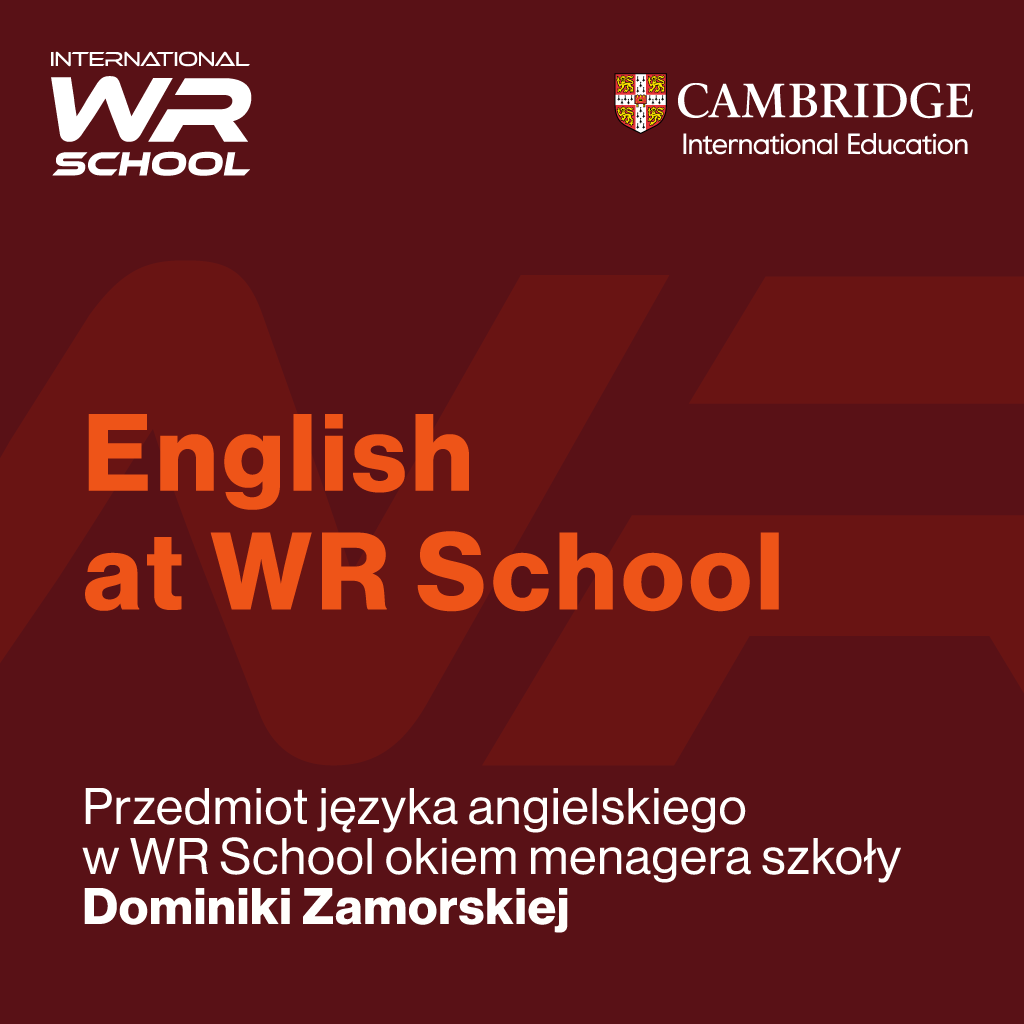“When looking at school desks, we see children whose minds are like blank slates, ready to absorb knowledge about the world. Among many subjects, English holds a special place—a window to other cultures, a key to global communication. However, the way this key is shaped varies significantly depending on the adopted teaching system.
In our school, we have opened the door to a method that goes beyond the framework of traditional Polish English lessons, immersing students in the language through contact with teachers from around the world. This encounter with the Cambridge International Education program, specifically English as a Second Language (ESL), raises questions about the nature and purpose of foreign language teaching in the modern world.
The Polish national curriculum for modern foreign languages, in its early stages, focuses on building the foundations of communication. A student finishing the first grade is expected to understand simple commands, name objects, and recite rhymes. This is language rooted in the immediate environment, supported by images and gestures. By the end of early school education, the student knows that people speak different languages, responds to commands, understands simple phrases and the general meaning of short stories, reads simple sentences, and asks questions within learned phrases. This approach emphasizes familiarization with the language through play and everyday situations. Linguistic accuracy, though important, gives way to communicativeness.
However, the world moves forward, and the competencies required of a young person entering adulthood become increasingly complex. Here, Cambridge Primary English as a Second Language comes into play. It’s not just about learning vocabulary and grammar; it’s about building confidence in using the language in various contexts. The subject of English as a Second Language aims to develop effective communication, critical thinking skills, and the ability to respond to diverse information and media.
The differences are subtle but significant. Where the Polish national curriculum focuses on simple interactions and embedding the language in a local context, Cambridge ESL emphasizes the integration of skills—reading, writing, speaking, listening, and the so-called “Use of English”—from the outset. Learning objectives are formulated as specific “can-do” statements, providing teachers and parents with a clear picture of the child’s progress.
Moreover, Cambridge ESL naturally fits into the idea of language immersion, which we implement in our school thanks to native-speaking teachers. Their presence is not just a grammar lesson conducted in a foreign language; it’s daily interaction with authentic English, with a variety of accents and cultural nuances. This experience goes beyond textbook dialogues and prepares students to function in a global environment.
The Cambridge program does not treat English as an isolated subject. It is a tool for developing curiosity about the world, tolerance, and openness to other cultures. Students are encouraged to actively explore the language, connect it with their own experiences, and build upon what they already know. This approach shapes not only language competencies but also attitudes of responsibility, innovation, confidence, and engagement—key traits for success in the modern world.
For parents who wish to actively participate in their children’s education, understanding these differences is crucial. It’s not about which program is “better,” but about what competencies we want to develop in our children. The Polish national curriculum provides a solid foundation, but Cambridge ESL, with its international reach and emphasis on practical language use, opens up broader horizons for students.
In this educational journey, where two worlds of English meet, our task is to create an environment where students not only learn the language but live it. Where linguistic diversity becomes a strength, and contact with teachers from different parts of the globe—a priceless experience. It’s an investment in the future of our children, in their ability to communicate, understand, and act in an increasingly complex and globalized world.”



